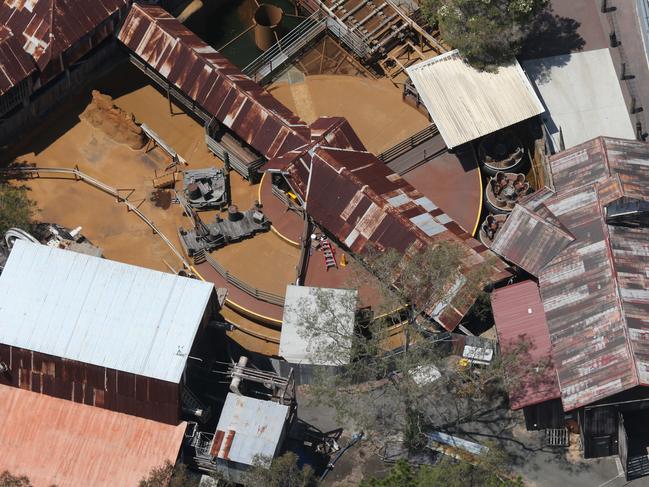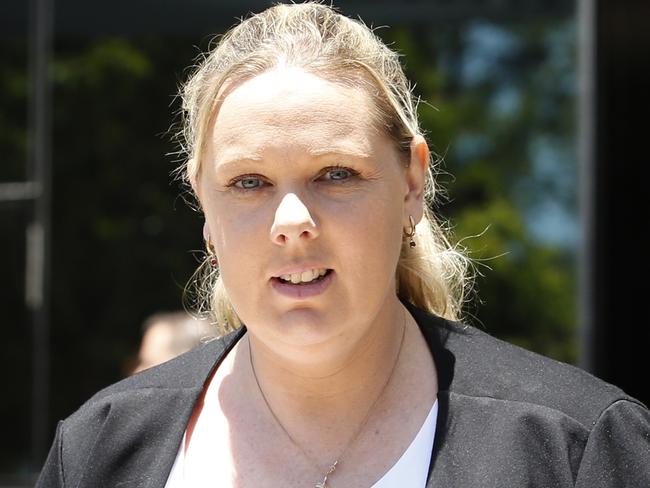Safety report shows simple change on Dreamworld ride could have saved lives
At least one of the violent deaths on the Thunder River Rapids ride could’ve been prevented if Dreamworld had made one simple change to its most popular attraction.
A damning report investigating what happened on at Dreamworld the day four people were violently killed on its Thunder River Rapids concluded at least one life could’ve been saved if the attraction had installed better seat belts.
When the raft carrying Cindy Low, Kate Goodchild, Luke Dorsett and Roozi Araghi flipped over, at least two of the victims were thrown back into the machinery of the conveyor belt.
A report completed by Workplace, Health and Safety Queensland concluded the ageing velcro seat belts contributed to at least one of the four deaths on the Thunder River Rapids ride in 2016.
“The seat belts provided on the rafts relied on the guests engaging them correctly and at least one of them failed when raft #5 was being shaken,” the report read.
“Thus at least one of the passengers would not have died if belts with mechanical buckles such as those fitted to cars and aircraft had been fitted.”
It is common practice on all water rides to have harnesses that are easy to undo, in case the raft or vessel takes on water.
Gold Coast local Tracey Christensen previously said she was left with bruising and rope burn six months before the tragedy when she was forced to catch her son after the raft they were on violently hit the water and his seatbelt came undone.

“We hit the water so hard that it forced my son up from his seat and his seat belt became undone. My friend and I caught him mid-air and put him back in his seat,” Ms Christensen told the Sydney Morning Herald.
Concerning YouTube footage from 2014 also showed one of the velcro seatbelts holding a young girl in come undone.
Workplace Health and Safety’s chief safety engineering adviser David Flatman told the inquest into the 2016 deaths at Dreamworld today the ride was in “generally poor condition” when the incident occurred. Photos in his report showed extensive corrosion and rust on electrical cables at the ride.
Mr Flatman also found “missing slats from the conveyor, excessive corrosion, crumbling concrete, no guarding at the foot of the conveyor, no water back flow prevention, water running over electrical components and unidentified controls including emergency stop controls”.
“The whole condition of the ride and the electrical components were of concern to me,” Mr Flatman told the inquest.

Mr Flatman’s report also concluded there had been “little learning” from previous incidents on the Thunder River Rapids and the extensive number of faults he observed on the 30-year-old attraction led him to conclude the ride was “unsafe to operate and a more rigorous maintenance regime should have been implemented”.
Earlier, the inquest heard from Dreamworld’s former operations system administrator Nichola Horton who worked for the theme park for 16 years.
Ms Horton was first employed by the park in 2002, working her way through Dreamworld roles until she became the operations system administrator — a job that including writing and amending ride procedures.
Ms Horton told the inquest she would have altered the wording of a memorandum for the ride’s staff which was dated exactly a week before the Thunder River Rapids tragedy.
A number of lawyers working the Dreamworld inquest have previously suggested the wording of the ride’s e-stop memorandum was “confusing”.

“The e-stop situated at unload platform must only be pressed in the event the main control panel cannot be reached when there is potential or immediate risk to either: guest/staff safety or well being; ride operating conditions; damage to ride equipment. Activating this will cause the ride’s conveyor to stop,” the memo read.
“It would have been worded so the load operator knew what the button actually did,” Ms Horton told the inquest.
“That’s what we focused on in the training... making them aware so they know what it did.
“I think people could be nervous if they didn’t know what the outcome of pressing the button was.”
The Workplace Health and Safety report also concluded the memo “would have created doubt as to what the unload operator should do when the water level dropped and raft #6 became stranded”.
Hours before the tragedy, Ms Horton assisted in a review of engineering safety systems – primarily of rides – to ensure operators were following procedure.
